NavSource Online: Service Ship Photo Archive

Please report any broken links or trouble you might come across to the Webmaster. Please take a moment to let us know so that we can correct any problems and make your visit as enjoyable and as informative as possible.

TRAINING
US Navy Salvage Divers during World War 2 were drawn from various rates and given specialized training in diving and salvage operations. There was no Diver Rate per se; it was an added specialty.
At the outbreak of war on Dec. 7, 1941, the Navy School of Diving & Salvage (NSDS) was located at the Washington Navy Yard. An incident that happened at New York City's Pier 88 in 1942 gave birth to a second Navy Diving School. The French liner Normandy burned and capsized at her berth. This afforded an opportunity for a school to be established which could provide "on the job training". The US Navy Training School (Salvage) NYC trained divers until it was moved to Bayonne, NJ in 1946.
THE MEDITERRANEAN THEATER
Salvage operations were extensive throughout the entire theater. In addition to battle damage inflicted upon allied warships and merchantmen on the high seas, the USAAF and German Luftwaffe sent countless numbers of vessels to the bottom of harbors and channels. In addition, retreating German and Italian forces scuttled large numbers of vessels to deny advancing allies the use of captured ports. These events often resulted in more tonnage beneath the waves than above them. It was up to US Navy Salvage Divers to get the ball rolling again.
WHAT IT WAS LIKE TO BE A NAVY DIVER
Navy Salvage was a decentralized command organized into small units that were assigned to tenders, salvage vessels and assorted auxiliaries. These units would then receive orders to proceed to various places where they were needed. Most units stayed together for long periods.
In the Mediterranean there were salvage hot spots on the North coast of Africa, around Anzio and Naples and on the South Coast of France. The Azores served as a base of repair for combat units receiving damage in the open Atlantic.
IS THIS THE ARMY OR THE NAVY?
Navy salvors ashore lived more like Seabees than ocean-going sailors. Since they were often somewhere just after, even during, a battle it was not unusual for them to see prisoners being marched off and experience air raids.
Although casualties due to hostile action were not high, the work itself was dangerous. When not at sea, divers were often billeted ashore since salvage vessels offered little in the way of accommodations.
Salvors ashore were issued side-arms and often looked more like infantry than sailors. There was very little ceremony, even for war time. No one wanted to know if they could do a proper bag layout or drill. What the brass did want was to get sunk vessels refloated or moved out of the way as soon as possible.
Since many salvage divers were also experienced welders, salvage units were often called on to assist in making temporary repairs at sea or in port to vessels damaged in battle.
TOOLS OF THE TRADE
Much of the equipment associated with free diving was non-existent then. Unless it was for the purpose of a brief assessment, all diving was done with a full weighted suit and lines.
Time below was logged and except for extreme emergencies never exceeded prescribed limits. A tired diver is a dangerous diver. Working below almost always included a great deal of underwater burning and every diver needed to be proficient with a cutting torch.
Topside equipment included all the various types of air compressors and deck gear then commonly used for salvage operations. When major harbor projects were undertaken, salvors would build or commandeer structures ashore and set-up various work shops. Time was of the essence and there was always more work to be done than salvage divers to do it.
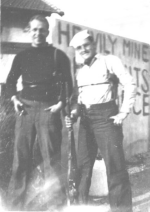 Security North African style | 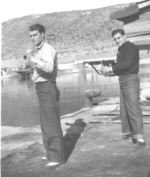 OK buddy - lemme see some ID |  If it floats we can use it | 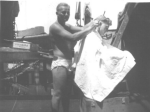 Don't laugh so hard pal - you're next | 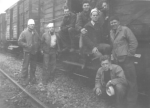 Not exactly the Orient Express | 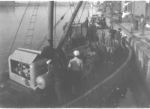 Another one you won't find in Jane's |
 USN Officers - Anzio |  Important Stop (see jeep hood) | 
| 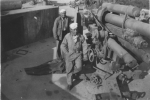 Sailors Check-Out German "88" - Anzio |  German POWs - Anzio |  German POWs - Anzio |
 Navy Salvage on the move - French Med. Coast | 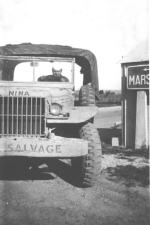 Behind the wheel | 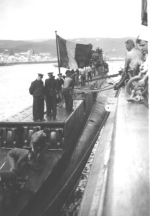 Unidentified Free French sub | 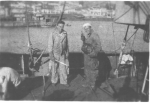 Winning the war with a torch |
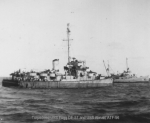 Torpedoed USS Fogg DE-57 and Abnaki ATF-98 | 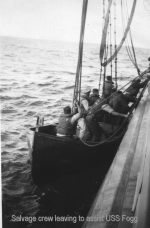 Salvage crew leaving to assist USS Fogg |  Torpedoed USS Fogg gets a new stern. Horta, Azores '45 |
| Back To The Service Ship Photo Index | Back To The Salvage Ship (ARS) Photo Index | Back To The Weight (ARS-35) Main Page |
| Comments, Suggestions, E-mail Webmaster. |
|
This page is created and maintained by Gary P. Priolo |